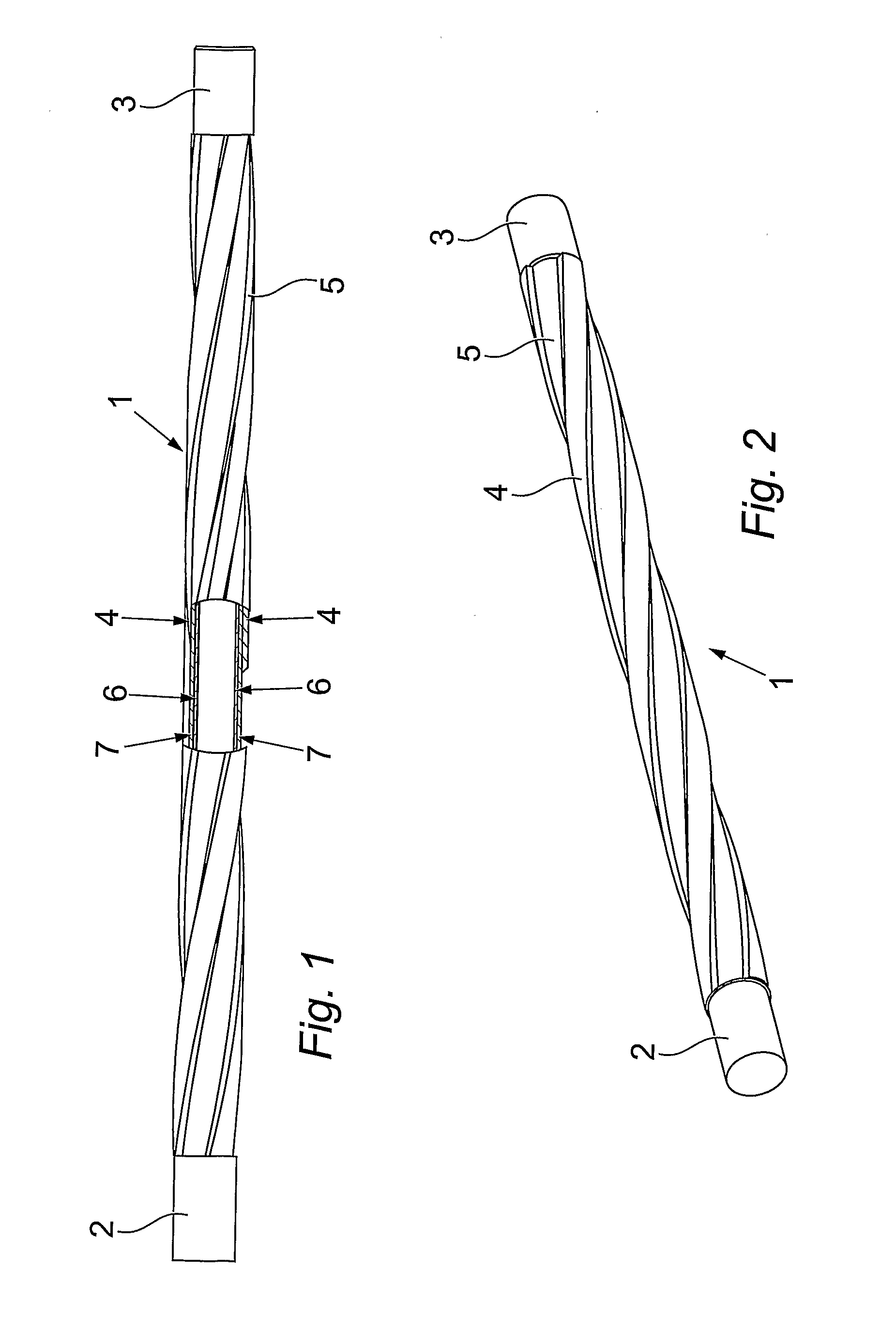Composite tubular product
a tubular product and composite technology, applied in the field of tubular elements, can solve the problems of material different problems, commercial difficulties in recovery, and immediate apparent enormity of technical problems, and achieve the effect of improving compatibility with the resin matrix
- Summary
- Abstract
- Description
- Claims
- Application Information
AI Technical Summary
Benefits of technology
Problems solved by technology
Method used
Image
Examples
Embodiment Construction
[0038]Referring to FIG. 1, an improved tubular is shown in the form of stand of drill pipe 1, that has traditional end coupling means in the form of box and pin ends 2, 3 respectively for use in forming tool joints in connecting into a drill string, and wear-resistant surface contact ribs 4, with flow-past channels 5 therebetween. The core of the drill pipe is a mandrel 6, which in this embodiment is a steel pipe, over which is applied a carbon fibre reinforcement material and bonding material 7 and which is built up to form the ribs 4. Ceramic beads (not shown) are introduced before the composite material is fully cured and generally form a random surface pattern of exposed ceramic smooth surfaces.
[0039]In a method of making such an improved tubular, a steel mandrel having traditional box and pin ends is mounted in a treatment booth, and reinforcement and bonding materials suitable for forming a durable composite are applied under composite material forming conditions.
[0040]Glass o...
PUM
| Property | Measurement | Unit |
|---|---|---|
| depths | aaaaa | aaaaa |
| depths | aaaaa | aaaaa |
| drill depth | aaaaa | aaaaa |
Abstract
Description
Claims
Application Information
 Login to View More
Login to View More - R&D
- Intellectual Property
- Life Sciences
- Materials
- Tech Scout
- Unparalleled Data Quality
- Higher Quality Content
- 60% Fewer Hallucinations
Browse by: Latest US Patents, China's latest patents, Technical Efficacy Thesaurus, Application Domain, Technology Topic, Popular Technical Reports.
© 2025 PatSnap. All rights reserved.Legal|Privacy policy|Modern Slavery Act Transparency Statement|Sitemap|About US| Contact US: help@patsnap.com


